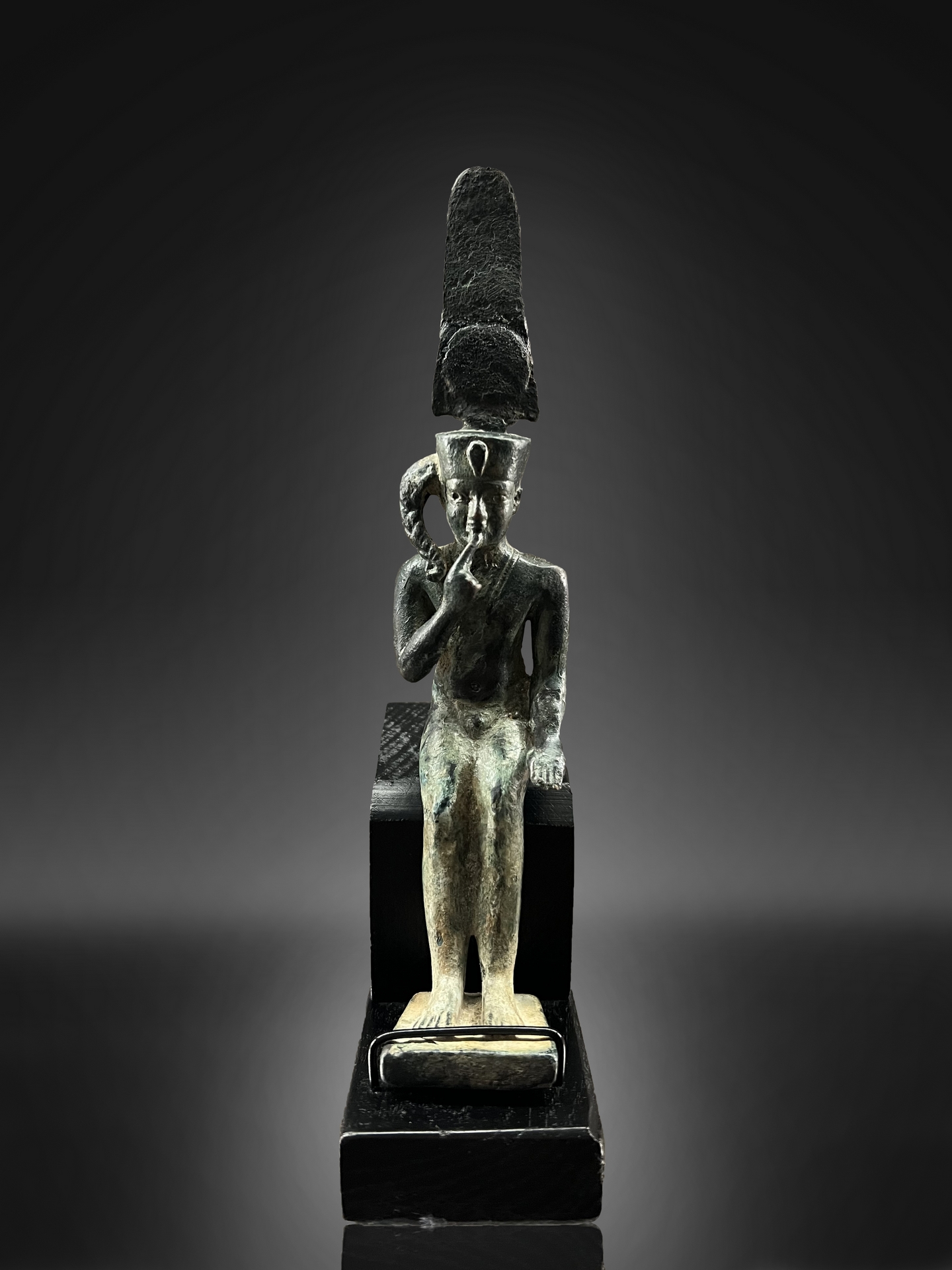
This bronze statuette depicts the Hellenistic god Harpocrates, posed as if seated on a throne. Harpocrates was adapted by the Greeks from the Egyptian child god Horus, also known as Harpa-Khruti (Horus the Child). Son of the goddess Isis and her husband Osiris, Horus represented the newborn sun as it rose each day.
The deity was often depicted as a small boy with a finger held to the lips, a typical Egyptian gesture symbolising childhood and also the Ancient Egyptian hieroglyph for “child”. The deity was later adopted by the Greeks and the misinterpretation of the gesture of the finger to the lips led to the association of Harpocrates with silence, hence making him the god of silence, secrets, and confidentiality in Ancient Greek mythology. Greeks and Romans typically made votive offerings to mark important life transitions.
Provenance
Ex John Aiello collection, Hewitt, New York; Ex Jon Lawton Estate Collection; Acquired St. James Ancient Art 2022
Ref: The British Museum, museum number EA41607